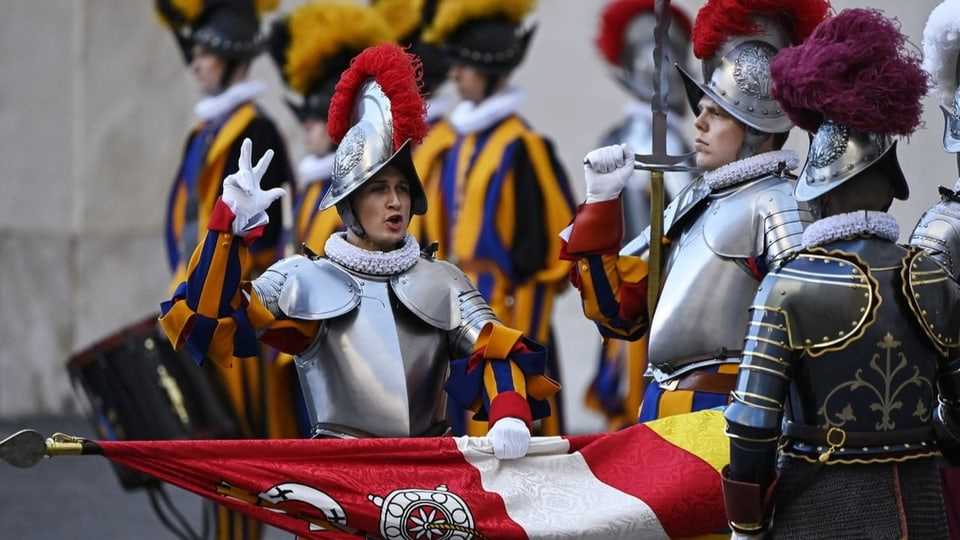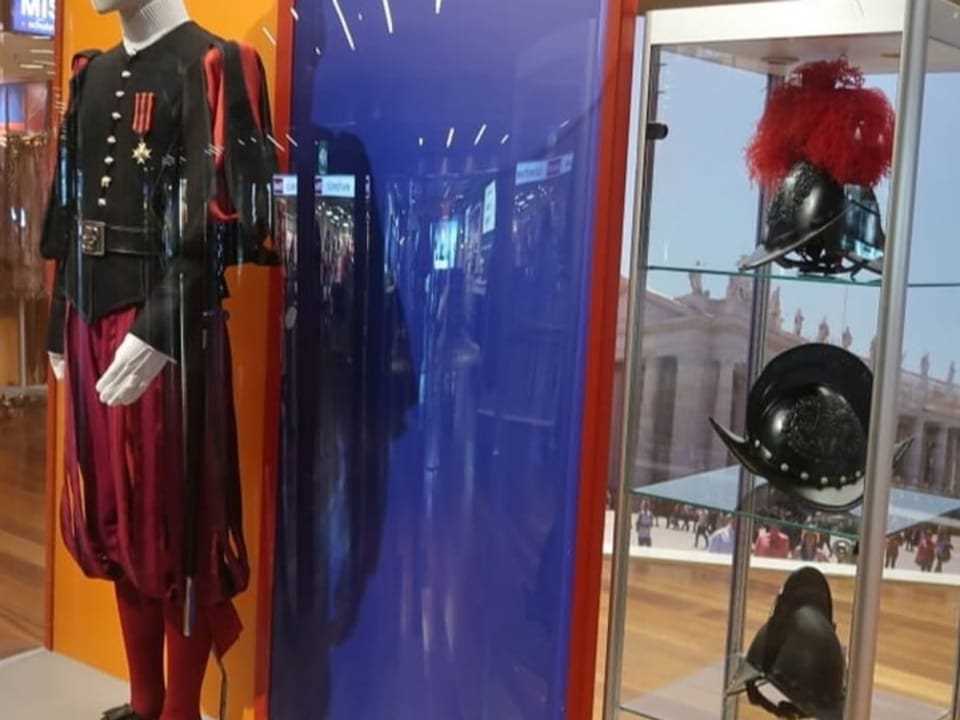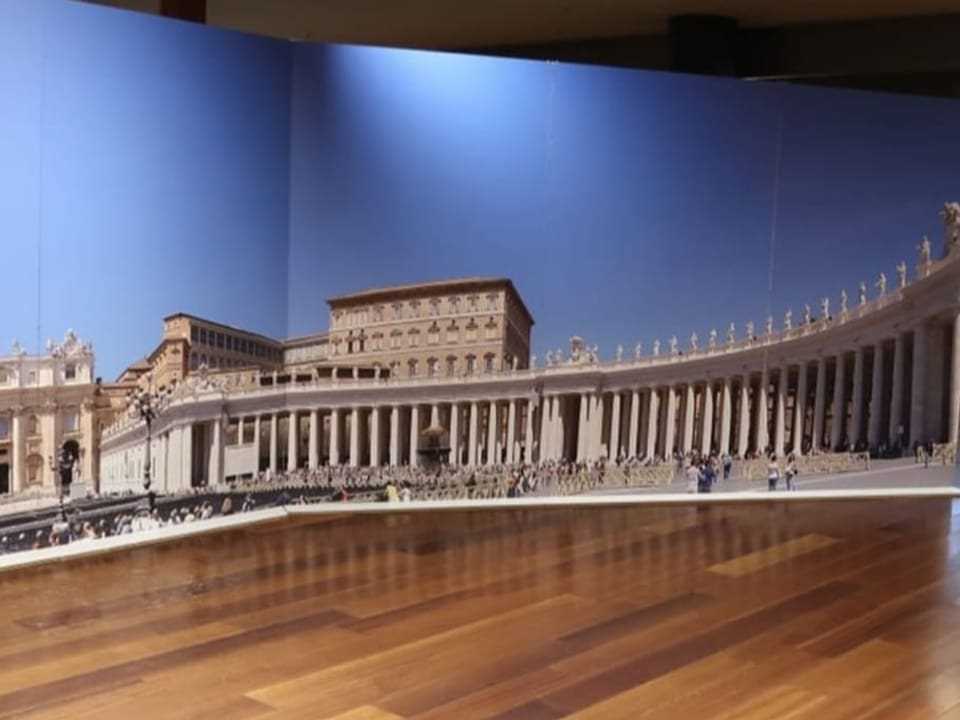contents
Nidwalden is a guest at the swearing-in ceremony of the Swiss Guard. Historian Valentin Groebner talks about history theater.
The Vatican’s invitation to the Sacco di Roma is a big deal for the canton of Nidwalden. The Nidwalden government travels to Rome with a large entourage on May 6 to be present at the swearing-in of the new Swiss Guards. On the same day there will be a folk aperitif in Stans, the main town in Nidwalden. But that’s not all: the canton celebrated the start on the Landsgemeindeplatz in Oberdorf last September. Also there straight from Rome: the commander of the guards and guardsmen in uniform.
A small exhibition in the Stans country park, the large shopping center, is also dedicated to the Sacco di Roma. The district administrator spoke in advance of 150,000 francs for the trip to Rome and the various events in Nidwalden.
The historian Valentin Groebner, who specializes in the Middle Ages, is standing in front of the huge mural on St. Peter’s Square in the exhibition in Stans. Brochures refer to the history of the Sacco di Roma. He takes a critical look at them: “The story of the Swiss mercenary service is certainly not idyllic. And the story of the Sacco di Roma even less,” he says. “It is an armed conflict between Christian secular powers who are actually committed to Catholic charity.”
The story of the Sacco di Roma is certainly not idyllic
Valentin Groebner explains that the cantons of Central Switzerland have a close relationship with the Vatican through the Catholic milieu that still exists in these cantons and the associated upholding of tradition.
The pope really wanted Swiss mercenaries
But the tradition has a warlike background. In the 15th and 16th centuries, the cantons of central Switzerland exported two things: dairy products and people. Or as Groebner says: “Cows, cheese and fighters. They sold their country’s children for money to foreign powers, to all who paid well.” The French king had a Swiss guard, as did the Austrians and the Pope too. At that time there was a huge problem of corruption: “Not only the authorities, but also private individuals mediated the expensive and sought-after special troops from Central Switzerland abroad. They were high-quality killers. And then they attacked each other,” explains Groebner.
In 1503 payments to mercenaries were forbidden. “But the Pope still wanted his Swiss mercenaries. He said they were only in defense of the Holy Father. In the midst of an embargo on mercenaries, the pope got an extra treat. He paid a lot of money for it.”
Helmet and flag from Nidwalden
Eventful history or not: Even today, many young men from Central Switzerland apply for the Swiss Guard. And the canton of Nidwalden is proud to have been selected as a guest canton by the papal Swiss Guard.

Legend:
On May 6th it’s that time again. The new guardsmen are sworn in.
key stone
Nidwalden can be there for the first time. Obwalden, Lucerne, Zug and Schwyz were already represented. Actually surprising that Nidwalden was only now invited to Rome. A large part of the equipment for the guardsmen is made in Nidwalden: the helmet is made in Nidwalden using a 3D printer, and the flag also comes from Nidwalden. It was designed 100 years ago by the Nidwalden state archivist Robert Durrer.
It’s a theatrical army for theatrical purposes.
Practically everything that can be seen of the Swiss Guard today comes from the 20th century, says Valentin Groebner. Everything was invented afterwards. The uniforms, so brightly colored and renaissance-looking, are from 1914: “It’s a theatrical army for theatrical purposes.”


